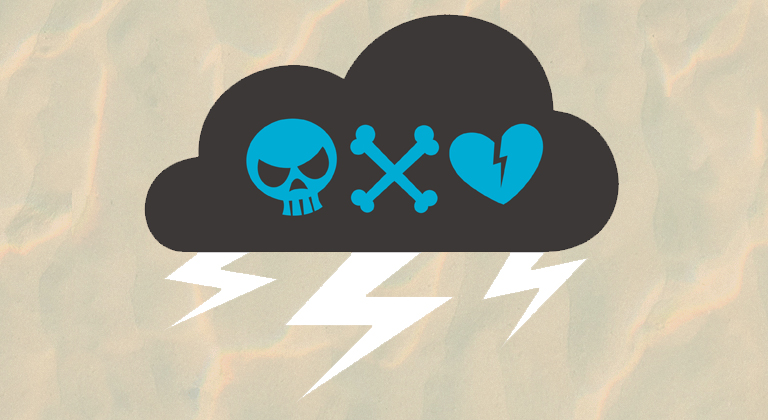Latest Tips for Advertising on Amazon
Over the years, we’ve posted multiple blogs about how to get the most out of Advertising on Amazon. However, things change – and some of the the advice Ginger has given authors a couple of years ago isn’t necessarily what he’d recommend today. So here are a few of his latest thoughts on how Advertising on Amazon is working these days, and what authors can do to take advantage of the changes.
A Changing Landscape
Technology changes. It’s inevitable. If it wasn’t, we’d still be stuck using the same interface and operating systems we were a decade ago on platforms like Facebook and Amazon.
There are multiple reasons why ecommerce and social media platforms update their layout and interface, and many of the choices the folks in Silicon Valley make don’t necessarily make a lot of sense to the likes of us. However, there’s no use complaining about these updates (and, believe me, there are plenty of Change.org petitions trying to do exactly that) since what we humble end-users prefer doesn’t have a huge role in the decisions these tech giants make. We just have to roll with the punches and adapt and alter our plans accordingly.
It’s all in keeping with Darwin’s Theory of Evolution, I guess – which doesn’t actually state that it’s “survival of the fittest” (that’s a common misnomer) but actually “survival of those most adaptable to change.”
So, if you’re seeing diminishing returns on your investment in Advertising on Amazon, or just wondering where to get started in today’s online environment, here are a few tips that might prove useful.
Tip #1: The Success of your Ads is Dynamic
Those of us brought up in the days of old-school advertising might think that costs are pretty static. It might cost $200 to put an ad in the local paper, for example, but that price would continue each and every week and only change if the newspaper’s readership went up or down.
In the world of digital advertising, though, the success of your advertising is often dynamic – changing based on (ironically enough) the success of your advertising. Nowhere is this demonstrated more clearly than with Advertising on Amazon.
This is because Amazon gets a cut not just of advertising revenue (like a newspaper would) but also a percentage of any sales made using that advertising. Therefore, they have algorithms in place that constantly weigh the difference between the profit they’d make showing an ad and the profit they’d make selling a product. Often, this means they choose to show ads (or provide Impressions, as they’re called on the dashboard) not to the advertiser bidding the highest, but to the advertiser with the product most likely to sell.
It makes sense when you do the math. Let’s say you have two authors selling their eBooks using Advertising on Amazon. Both books are priced at $4.99, but one author is bidding $1.50 on their top keyword, while the other is bidding just $0.50. You’d think that the author bidding $1.50 would be more likely to have their ad shown to potential readers.
But if the second book is more likely to sell a copy, Amazon will often give that valuable placement to the lower-bidding author instead – because they’re actually more likely to make money that way!
Sure, a bid of $1.50 means Amazon will collect a buck and a half if somebody clicks on that advert. But if the other author’s book has proven to have a higher Click-Through Rate (as in, more people click on that ad than for the other book) then Amazon might display that book instead simply because they’d rather take a higher chance of earning $0.50 than a lower probability of earning $1.50.
Plus, if that book is more likely to sell a copy, they’ll give the lower bid preferential treatment because not only will they collect the $0.50 cost-per-click, but they’ll also pocket 30% of the royalties – so a book priced at $4.99 could net Amazon nearly $2.00 in profit (cost-per-click + royalties) against just $1.50 in potential profit from the other book.
So, the better your book performs, the more chance you have of getting Impressions and the less you’ll pay for them – and the better your book continues to perform, the less you’ll have to pay moving forward!
It seems counter-intuitive, but it makes a lot of sense when you do the math; and it’s really where success is to be found using Advertising on Amazon. The more clicks your ads receive and the more sales your books make, the less you’ll end up paying overall – and the more profit both you and Amazon will make!
It’s a very important thing to be aware of, and it all comes back to one essential fact: Conversions are everything. If you focus on having the strongest cover and the most compelling blurb you can, your book will be in a much better position to succeed when you advertise it; and the more your advertising succeeds, the more profitable it will eventually become.
Tip #2: Automated Ads Can Be Successful
When I started writing blog posts about how to use Advertising on Amazon, I warned people away from using automated ads of any description. All you’d have to do is look at the keywords Amazon’s algorithm came up with to see how useless their automated suggestions were.
However, times change – and now Amazon’s automated ads rely less on generated keywords and more on placing your ads in book categories that might appeal to your potential readers. The longer you run ads, the more Amazon determines who (if anybody) is clicking on them, and adjusts your campaign accordingly.
This means automated advertising campaigns have actually started to provide consistent success for authors who have especially strong books. I’ve tried running automated campaigns myself and been astonished to find them quickly performing as well as the carefully curated ones I spent hours assembling keyword-by-keyword.
Now, that’s not to say a little more strategic thought doesn’t have its advantages – but I’d certainly argue that automated ads shouldn’t be avoided like I’d used to recommend. In fact, they’re the perfect starting point for authors who literally don’t know where to begin since they’re so simple to set up – and if you want to see evidence of how effective they can be, I’d recommend listening to our podcast with Trixie Silvertale, in which she outlines how automated ads started her on a journey that took her book sales from $200 a month to a six-figure income.
Tip #3: You’ll have to Spend Money to Make Money
Of all the changes I’ve witnessed with Advertising on Amazon, this is perhaps the toughest one to digest. The appeal of Advertising on Amazon used to be that you could have very low-cost campaigns that would consistently generate profits, so it was a great platform for first-time advertisers to dip their toes into without blowing through scary amounts of money. In fact, often one of the challenges for authors was getting Amazon to actually SPEND their money!
But when you start to experiment with automated ads, or have higher-performing books, that reality quickly changes; and the success and failure of your advertising often comes down to how much money you need to spend to optimize your campaigns.
I plan to write a much longer blog post about this topic, but a quick and simple way to explain it is through probability. You have to start thinking of every ad placement you get – every single click – of being like a lottery ticket. The more lottery tickets you have, the more of them might turn out to be a winner.
This is because every impression your books get means something. The cover of your book is literally being displayed to a real-life human being – a human being just like you, when you’re scrolling through Amazon. That’s why it’s so important to think like a reader when you’re designing your cover and writing your blurb.
And every time you get a click on your ads, it’s like a lottery ticket that could result in a book sale. The problem is, you need to be able to work out what percentage of those clicks will actually be a winner, and that costs money. A lot of money. Earning 100 clicks on your ads could easily set you back between $50 and $100 in advertising costs and that’s with no certainty that enough of those clicks will convert into sales to make your advertising profitable.
But if you don’t try it, you’ll never know!
Because that’s the most essential information you can get in this business – your conversion rate. If you can work out how many clicks it takes to “convert” into a sale, you can start to figure out how much you can bid to make those clicks turn a profit for you. However, you have to get those clicks in the first place to be able to work that out!
And there’s no way of predicting which ones will work out, so you have to be prepared to lose money to find that out. Remember, each click is like a lottery ticket, so there’s no pattern to which ones end up being a winner. You could earn ten clicks resulting in no sales and think your campaign is a loser, but then suddenly sell a book on the 11th and 12th click, instantly turning that loss into a profit. There’s just no way to be sure about how consistently your book will perform unless you sink enough money into advertising to find out.
Once you’ve earned 100 clicks, then you’ll have a rough idea of how many convert into book sales over a consistent, long-term basis and can adjust your tactics accordingly. Trying to strategize over 10 or 11 clicks just won’t get the job done; even though that’s the point at which many first-time advertisers lose hope and give in.
Advertising always ends up being a numbers game, but those numbers have to be high – otherwise you’re only getting a fraction of the data you need to make informed decisions. So, be prepared to lose money when you first start advertising. It’s literally the cost of doing business, and the best and most objective way of figuring out the changes you need to make in order for your career as an author to be successful.
BONUS Tip: Always think like Amazon
Authors often ask me very tactical questions when it comes to Advertising on Amazon: Like “what’s an appropriate bid?” and “how do I find keywords to advertise with?” The problem is that these recommendations are rarely consistent. As I’ve demonstrated above, the landscape of advertising is constantly in flux, and even if it wasn’t, the advice that works for one author might be disastrous for another.
But one piece of advice that has always served me well is to consider things from Amazon’s perspective. Sure, they’re in the business of making money – but they want to make money by selling things, not advertising them.
Whatever changes occur on Amazon’s homepage and advertising dashboard, remember that they’re always designed to help Amazon sell more stuff. The secret to success is to make sure your books are part of that stuff. If you focus on packaging your books up into the most attractive, compelling, and click-worthy product they can possibly be, Amazon will always be on your side when it comes to advertising.
It can be a tough pill to swallow, since this forces authors to take responsibility for why potential readers aren’t clicking on their ads or buying their books. However, if you can figure that out (and this week’s podcast guest JP McLean has some great insight into this) then your potential for success is limitless. Getting that raw data – spending the money to earn clicks and sales – is the quickest way to figure that out.
Good luck! And keep in mind that the biggest element in successful advertising is always going to be your product, and the one thing we’ll always have working to our advantage on Amazon is that we’re in charge of that.
Remember, Hidden Gems offers 1-on-1 consulting on Advertising and Marketing your books. Book a chat with Craig or Ginger if you’re wondering how to get started, or what you’ll need to do to optimize your advertising campaigns on Amazon or Facebook.











